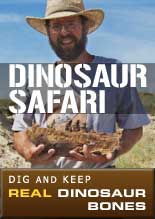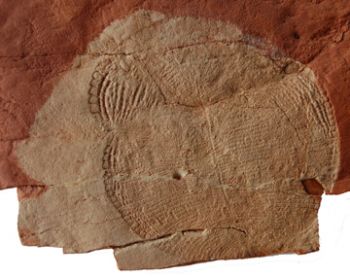
Dickinsonia lived approximately 560 - 541 million years ago, during the Late Ediacaran or Pre-Cambrian. It was contemporaneous with other odd Ediacaran organisms, which resemble mud-filled bags, stalks, and mattresses. These aren't animals, as we know them. Dickinsonia is sometimes put in the phylum Proarticulata, which would be the only animal phylum to go completely extinct if it did really exist. Other animals sometimes put in this phylum are Yorgia, Vendia, Archaeaspinus, Andiva and Ovatoscutum. These animals were not truly bilateral, but possessed a "gliding reflection" bilateral symmetry, where one side was partially misaligned with the other.
Dickinsonia left behind unskeletonized imprints, which have been found in the famous Flinders Ranges of South Australia, as well as Rajastan in India, Podolia in Ukraine, and the White Sea region of Russia. The fossils range wildly in size from 4 mm (tiny) to 1.4 m (man-sized). This extreme variation has prompted some paleontologists to consider Dickinsonia a fungus or protist rather than an animal, but there are other examples in the animal world of this variation. Dickinsonia evidently kept growing on all scales until it was covered in sediment or otherwise killed.
Dickinsonia vanished along with the rest of the Ediacaran fauna at the dawn of the Cambrian. The reason for this extinction is unknown, but hypotheses include the usual suspects (volcanism, asteroid impact, etc.) but also a few new ones, including the advent of predators or being out-competed by the more effective Cambrian organisms. Without more fossil and paleo-climactic evidence, we may never know.
This replica also shows a Parvancorina minchami one of the shield-shaped Ediacaran fossils. It has a raised ridge down the central axis of symmetry. This ridge can be high in un-flattened fossils. At the 'head' end of the ridge there are two-quarter circle shaped raised arcs attached. In front of this are two nested semicircular lines. Teeth seem to come from the raised parts pointing into the center spaces. These may show as raised lines. The fossils are normally about 1 cm in each of width and length, but can be up to 2 cm.
resin
21"L x 12"W 6" Dickinsonia
Item 1624
Category: Replicas
Type: Skeletons
Phylum: Invertebrates
Class: Not Specified
MORE PHOTOS:
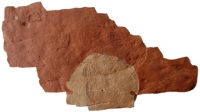
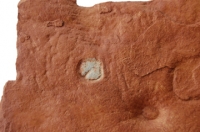
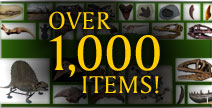
Now Over 1,000 Items!
PrehistoricStore.com offers the largest selection of replica fossils and other fossil-related products anywhere in the world!
Download a Full Catalog (3MB PDF)
OVER 260 PAGES OF REPLICAS AND MORE!
